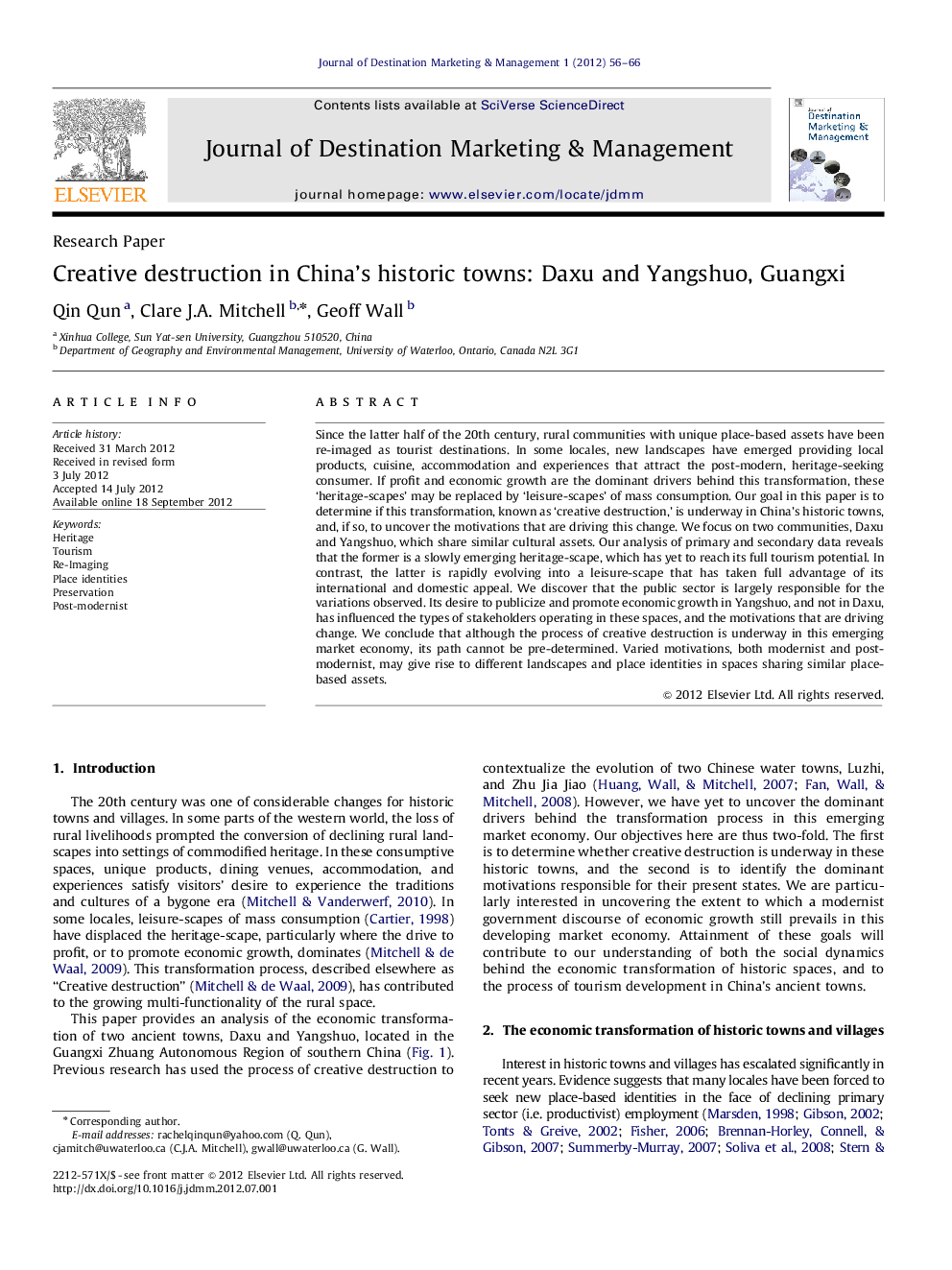| Article ID | Journal | Published Year | Pages | File Type |
|---|---|---|---|---|
| 1011125 | Journal of Destination Marketing & Management | 2012 | 11 Pages |
Since the latter half of the 20th century, rural communities with unique place-based assets have been re-imaged as tourist destinations. In some locales, new landscapes have emerged providing local products, cuisine, accommodation and experiences that attract the post-modern, heritage-seeking consumer. If profit and economic growth are the dominant drivers behind this transformation, these ‘heritage-scapes’ may be replaced by ‘leisure-scapes’ of mass consumption. Our goal in this paper is to determine if this transformation, known as ‘creative destruction,’ is underway in China's historic towns, and, if so, to uncover the motivations that are driving this change. We focus on two communities, Daxu and Yangshuo, which share similar cultural assets. Our analysis of primary and secondary data reveals that the former is a slowly emerging heritage-scape, which has yet to reach its full tourism potential. In contrast, the latter is rapidly evolving into a leisure-scape that has taken full advantage of its international and domestic appeal. We discover that the public sector is largely responsible for the variations observed. Its desire to publicize and promote economic growth in Yangshuo, and not in Daxu, has influenced the types of stakeholders operating in these spaces, and the motivations that are driving change. We conclude that although the process of creative destruction is underway in this emerging market economy, its path cannot be pre-determined. Varied motivations, both modernist and post-modernist, may give rise to different landscapes and place identities in spaces sharing similar place-based assets.
► Creative destruction describes the replacement of a traditional rural landscape with a heritage-scape, and their subsequent replacement by a leisure-scape of mass consumption. ► This process is underway in two of China's historic towns, Daxu and Yangshuo. ► Both settlements originally shared similar place-based assets, but only Yangshuo is taking on the identity of a place of entertainment (a leisurescape). ► Variations in stakeholders (public versus private) and their motivations (modernist versus post-modernist) are found to be responsible. ► Different landscapes and place identities may emerge in spaces sharing similar place-based assets.
